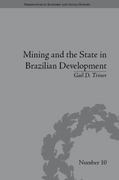Provide solution to the following questions.
Calculate, using an interest rate of 10%, the discounted mean term of a 20-year annuity certain payable annually in arrear under which the first payment is $1,000 if: (i) the payments remain level throughout the term [2] (ii) the payments increase by $50 each year [3] (iii) the payments increase by 5% (compound) each year [4] (iv) the payments increase by 10% (compound) each year. [2] [Total 1 1] 20 You are given that 2x1.1"' = 718.027. felYou are given the following information about the term structure of interest rates: The 1-year spot rate is 4.1% pa. The 2-year spot rate is 4.0% pa. The 4-year spot rate is 4.4% pa. The 5-year spot rate is 4.5% pa. (i) Calculate the theoretical price of a 3-year zero-coupon bond that is issued at time 2 and is redeemable at par. [2] (ii) A 1-year zero-coupon bond is issued at time 3 and has a theoretical price of f95.50 per f100 nominal. Given that the bond is redeemable at par, calculate: (a) the 3-year spot rate, and (b) the 1-year forward rate starting at time 2. [3] (iii) Calculate the gross redemption yield on a bond that pays annual coupons of 6% pa (at times 1, 2, 3, 4 and 5) and is redeemable at 1 10% in 5 years' time. [4] [Total 9]You are a member of a team responsible for the evaluation of investment proposals in a large multinational company that is quoted on a major stock exchange. The directors of one of the company's largest subsidiaries has proposed a major investment that would double that subsidiary's manufacturing capacity and would enable it to export to several new markets. The proposed investment would require the company to raise a great deal of money, either by borrowing or by the issue of equity. The amount involved is large enough to justify either a share issue or the sale of loan stock, but not a combination of the two. The proposal has been backed by a detailed analysis of the cash flows that are expected to arise from this expansion. The company has a policy of evaluating investment opportunities on the basis of the net present value (NPV) of estimated cash flows. (i) (a) Identify the factors that the company may use to determine the rate at which this proposal might be discounted; and (b) Explain which of these factors would be most relevant to this project. [6] (ii) Explain how the decision to raise finance using either loan stock or equity might affect the company's weighted average cost of capital (WACC). [8] (iii) It has been suggested that "political", or subjective, factors within companies are often more relevant to investment decisions than objective economic factors in deciding whether a project should proceed. Explain why this might be so. [6] [Total 20]









